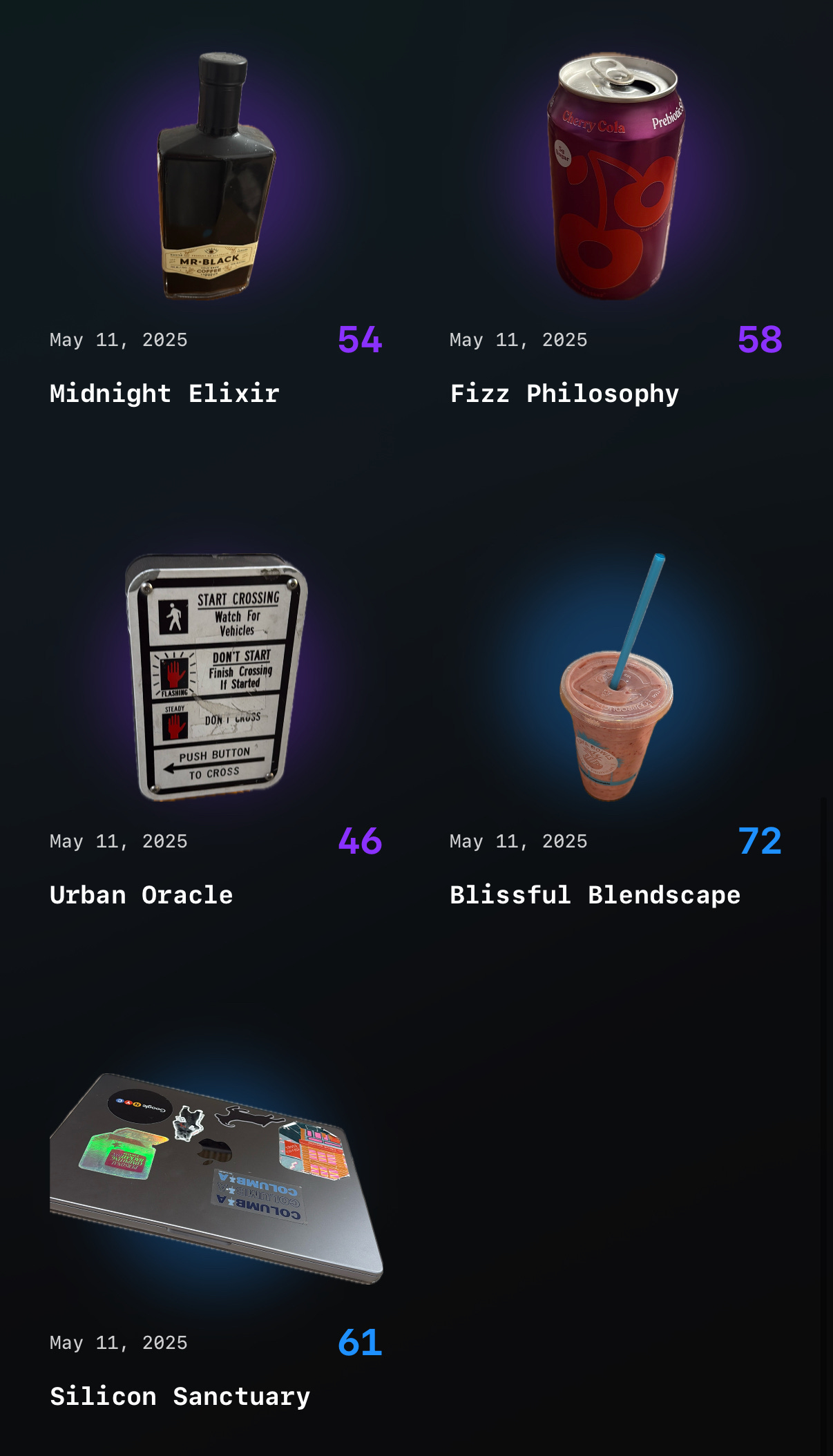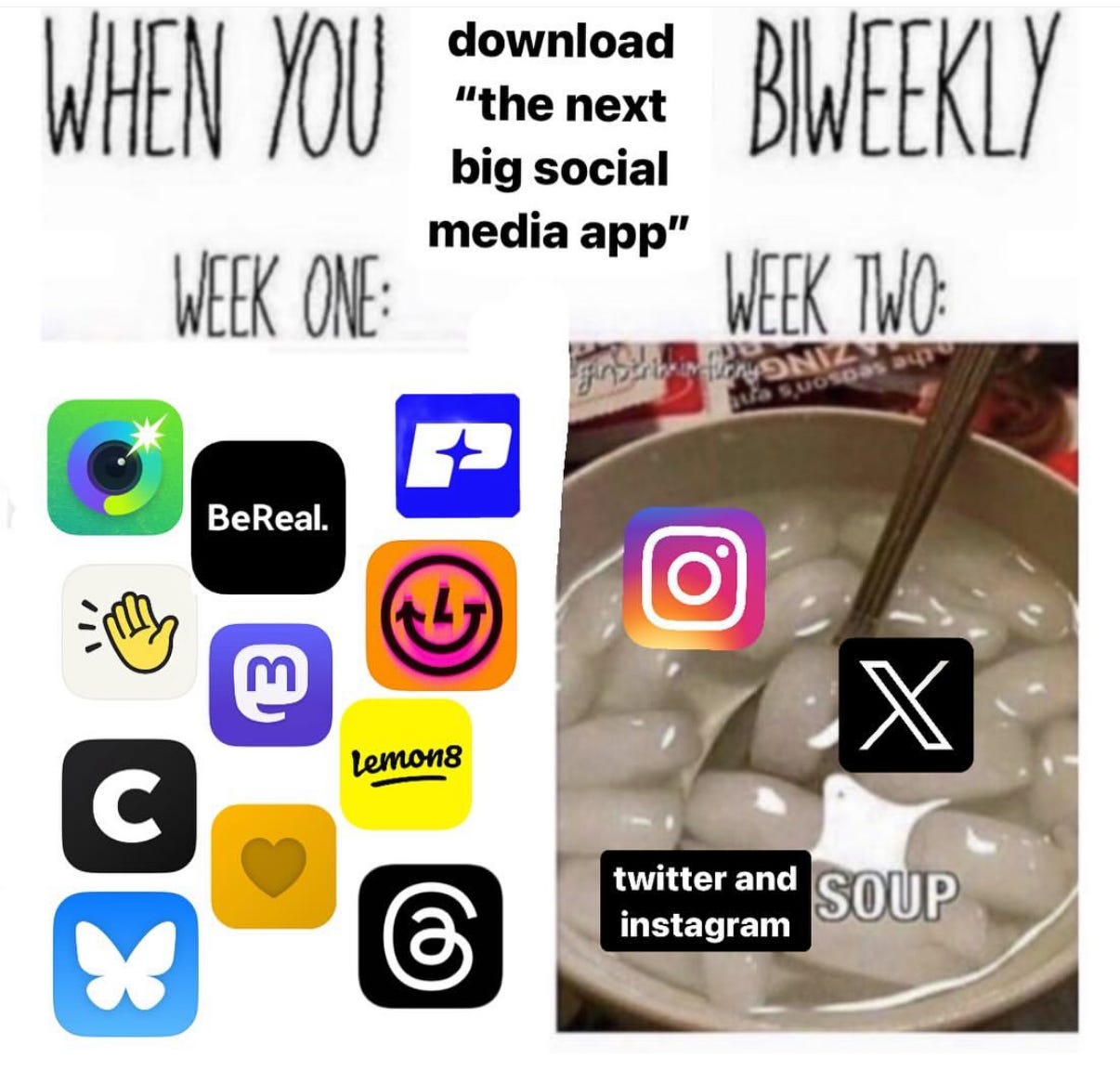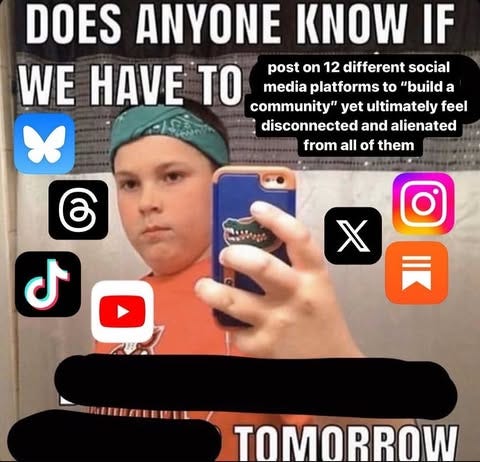I tried the social app based on 'aura'
The gamified, camera-first app Aurascope assigns aura scores to objects you photograph.
This issue of PHONE TIME includes: my review of photography-based social app Aurascope—along with my thoughts on the challenge of building “authentic” social media—a roundup of internet-related happenings, and some memes of the day.
Instead of likes, how about a social app based on “feels”?
That’s how Aurascope describes itself, saying it “blends photography, AI, and emotional intelligence into one game-like experience.”
I tested it out. While I found it a bit buzzy for my taste—the App Store description piles on phrases like “vibe check,” “personalized insight,” and “capturing moments”—I appreciated its creativity, clean interface, and unique take on blending photography with memory-sharing.
When you open Aurascope, you’re taken straight to a camera page that encourages you to “explore the world” and “scan your surroundings.” You point your camera at an item—a book, person, coffee mug, trinket, or cocktail—and add it to your “orbit.” Aurascope crops the object and assigns it a short description and an “aura score,” which it says is based on “500+ data points, including lighting, color, posture, context, and emotional tone.” You can also upload items from your gallery to scan, but I found it more fun to start fresh.
I started with five items: my laptop, a strawberry banana smoothie, a crosswalk sign, a can of Poppi soda, and a bottle of Mr. Black coffee liqueur. Out of 100, the app gave the smoothie the highest score (72) and the crosswalk sign the lowest (46). Since both were shot in natural light around the same time, my best guess is that color influenced the results.

Aura photography has grown in popularity in recent years. This Cosmopolitan writeup by Sarah Potter is a good overview of its history, ties to new age spirituality, and the meanings associated with each color. “Aura beauty” was one of Pinterest’s 2025 trend predictions, with a board full of iridescent, rainbow-colored eyeshadow looks featuring sparkly purples, sky blues, and bright greens.
Aurascope surrounds each scanned item in a colored glow, though so far, I’ve only gotten blue and purple. By focusing on photos of real-world objects, the app positions itself as more grounded in the everyday.
“Most social apps push you to post highlights, act perfect, and perform for others. Aurascope is different. It’s more personal, more playful, and more reflective,” reads its App Store description. “No filters. No pressure. Just you, your camera, and a beautifully simple way to learn about yourself and the world around you.”
It isn’t the first photography app to market itself as a more authentic, in-the-moment social experience. The now-shuttered Poparazzi hoped that its anti-selfie model would create a space “focused on preserving authentic moments with friends.” Dispo, designed to mimic a disposable camera, was called the “anti-Instagram” and asked whether it could “make social media fun again.” Apps like Lapse and Locket also emerged as lower-stakes ways to share photos with close friends. And of course, there’s BeReal, which Aurascope references explicitly in its own description.
I’m generally skeptical of any app that makes big claims about offering a more “authentic” social experience. For one, these apps often end up folded back into the broader, clout-driven social landscape. BeReal may have positioned itself as an Instagram alternative, but its posts quickly became screenshot material for Instagram photo dumps.
I’ve also pointed out on TikTok that apps like Co-Star and Pinterest are designed to be screenshotted and reposted, through Spotify Wrapped-style recaps and other catchy, bite-sized engagements. Sure enough, Aurascope includes a stories-like “Orbit Unwrapped” feature built for sharing elsewhere.
Aurascope’s description compares the app to Co-Star and Pokémon Go, and the inspirations from both are clear. The app’s object descriptions echo the trendy, slightly enigmatic tone of Co-Star’s AI-powered readings, while the experience of collecting items in your physical surroundings—categorized into “Souls,” “Artifacts,” “Spaces,” and “Elixirs”—feels like a clear parallel to Pokémon Go. The location-based aspect also reminded me of Corner, another app I’ve covered here and on TikTok.
With such varied references—the App Store blurb also gives nods to Lensa AI, Wysa, I Am, The Pattern, and Duolingo—it can feel like Aurascope is still figuring out exactly what it wants to be. The overall concept is cohesive, and the experience is streamlined, although I did have some issues loading the social “galaxy” feature. The website also mentions a blockchain integration, although I couldn’t find it within the current version. I can imagine that aspect turning off some users if implemented.
The object descriptions are amusing, but the trendy language reminds me a bit too much of the “You go girl!” ChatGPT responses or Spotify’s AI-generated “daylist” and “nightlist” copy.

Building a lasting social app, especially one aiming to deliver a more “authentic” experience, is an uphill battle in my view. It’s a space with a high bar for disruption, and you only have to look as far as BeReal to see how quickly these apps can lose momentum as they try to scale beyond their initial appeal. Aurascope will need to show some substance beyond the gimmick. Still, I appreciate apps that make me think differently about photography, memory-sharing, or connecting with friends, and Aurascope delivered on that front.
Elsewhere online
It is the 29th birthday of the Internet Archive.
I love this guide of 50 ways to live a more analog lifestyle, including: read the newspaper, use your cookbooks, put your phone on grayscale, get a film camera, join a club (I’m a big fan of this one), get a record player, host dinners, send postcards—Tanner Garrity, InsideHook.
The Louvre Is Saying Goodbye to Its Nintendo 3DS Tour Guides—Luis Prada, VICE.








